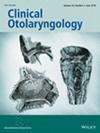A Non-Negligible Role of Benign Paroxysmal Positional Vertigo in Paediatric Vertigo: A Systematic Review and Meta-Analysis
Abstract
Objective
Benign paroxysmal positional vertigo is a common cause of vertigo in adults but has been studied less extensively in children. Interestingly, the reported diagnostic frequency of benign paroxysmal positional vertigo in paediatric vertigo showed high variability. This systematic review and meta-analysis aimed to evaluate the proportion of benign paroxysmal positional vertigo in childhood vertigo and explore relevant factors to accurately diagnose BPPV in children.
Design
Systematic review and meta-analysis.
Setting and Participants
PubMed, EMBASE database and Cochrane library (from 1 January 1962, to 12 April 2022) were searched for eligible studies analysing the proportion of benign paroxysmal positional vertigo in children with vertigo. Only papers published in English were included.
Main Outcome Measures
The pooled proportion of paediatric BPPV in childhood vertigo, and its corresponding 95% confidence interval (CI), were calculated. Additional subgroup analysis was performed by year of publication, testing techniques, department, regions, age and registering comorbidities of relevance for balance.
Results
Ultimately, 26 studies were eligible for our meta-analysis. These studies involved 4043 childhood vertigo cases, of which 460 were BPPV. Based on the results of a random-effects model-based meta-analysis, the pooled proportion of benign paroxysmal positional vertigo in childhood vertigo was 5.5%. However, a subgroup analysis revealed a significantly higher pooled proportion of benign paroxysmal positional vertigo, with 9.9% in the videonystagmography subgroup and 17.1% in the comorbidity subgroup. Moreover, the proportion of BPPV varies among children with vertigo in different age groups.
Conclusion
In conclusion, the pooled proportion of BPPV in vertigo children was 5.5% across all samples. The present study revealed that age, applying VNG in positional testing, and comorbidity diagnosis may be closely related to the diagnosis of BPPV in children. Additionally, to prevent missed diagnosis of benign paroxysmal positional vertigo, diagnostic BPPV tests should not be neglected in children suffering from other vertigo-associated diseases.

 求助内容:
求助内容: 应助结果提醒方式:
应助结果提醒方式:


